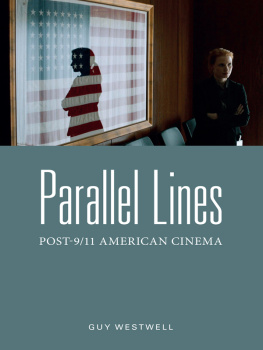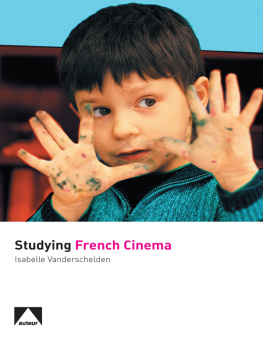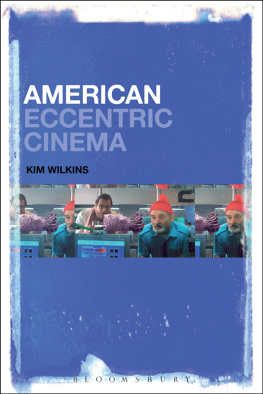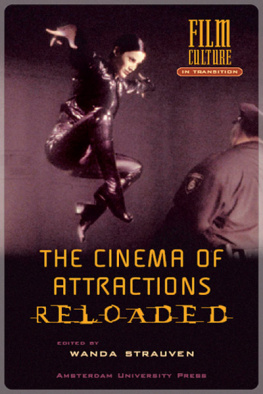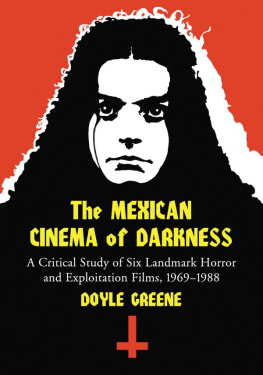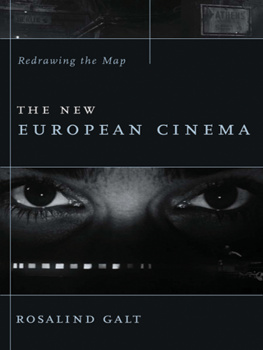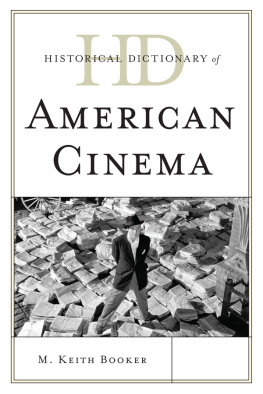Parallel Lines
Parallel Lines
POST-9/11 AMERICAN CINEMA
GUY WESTWELL
A Wallflower Press Book
Published by
Columbia University Press
Publishers Since 1893
New York Chichester, West Sussex
cup.columbia.edu
Copyright Guy Westwell 2014
All rights reserved.
E-ISBN 978-0-231-85072-8
Wallflower Press is a registered trademark of Columbia University Press
A complete CIP record is available from the Library of Congress
ISBN 978-0-231-17202-8 (cloth : alk. paper)
ISBN 978-0-231-17203-5 (pbk. : alk. paper)
ISBN 978-0-231-85072-8 (e-book)
Cover image: Zero Dark Thirty (2012) Annapurna Pictures
Cover design: Elsa Mathern
A Columbia University Press E-book.
CUP would be pleased to hear about your reading experience with this e-book at .
Contents
Federico, this book is for you and describes some of the things that happened in the decade before you arrived.
I am extremely grateful to Yoram Allon, Neil Calloway, Vinet Campbell, Dr Jack Holland, Sebastian Horn, Nadia Khan, Athena Mandis, Daniel Robson, Salvatore Salafia, Dr Rick Saull, Dr Rachele Tardi, Maren Thom, Joe Ursell, Professor Cynthia Weber, the staff of the Humanities Two reading room in the British Library, my wonderful colleagues at Queen Mary and the MA Film Studies classes of 200809 and 201314. Professor Annette Kuhn and Dr Nick Jones offered editing support that was above and beyond the call of duty. Of course, any errors of substance or presentation remain my own.
As always, I extend my most heartfelt gratitude and love to Debora Marletta.
Mark Redfield describes the use of the abbreviation 9/11 as a blank little scar around which nationalist energies could be marshalled (2009: 1), and it is these nationalist energies as they shape post-9/11 cinema that I wish to describe. In an age of globalisation, high immigration, rapid technological change and the fragmentation of political consensus, the concept of national identity is contested; but I will argue that it remains useful. The work of Benedict Anderson describes the synthetic and relatively recent invention of the modern nation state and the ways in which national identity results not just from the establishment of territorial borders but also as a result of the cultivation of a history, tradition and culture based on shared attitudes, habits, feelings and assumptions (1983: 111). A key aspect of Andersons argument is that modern communications (in his case the print media, in my case the cinema) are essential in creating this imagined community among strangers from a disparate range of geographical, social and ethnic backgrounds (1983: 46). More prescriptively, David Miller offers five facets to any given national identity: first, a shared belief and mutual commitment; second, a sense of shared history; third, a particular territory; fourth, an active participation in the community; and fifth, a distinct public culture (1995: 2147). Similarly, Stanley Allen Renshon claims that national identity is predicated on shared
ways of seeing and understanding the world, the use of language and the cultural frames embedded in it, and the web of relationships and experiences that provide the internal skeleton upon which later external experience is built. (2005: 3)
As these different models show, the imagined community within a particular time and place is brought together through lived experience meshing with social practice. The cinema is a form of cultural production in which Millers different facets can be seen to reinforce one another: films distributed over a national territory, audiences actively seeking out and participating in a distinct public culture, the regimens of genre and the cycles of entertainment responding to the audiences preferences and shared historical reference points, and so on. Mette Hjort and Scott MacKenzie write that
individual films will often serve to represent the national to itself, as a nation. Inserted into the general framework of the cinematic experience, such films will construct imaginary bonds which work to hold the peoples of a nation together as a community by dramatising their current fears, anxieties, pleasures and aspirations [and as a result those in a given society are] thus invited to recognise themselves as a singular body with a common culture. (2000: 6)
Conceptualised this way, individual characters act as ciphers for different ideological positions, with narratives seeking resolution for conflict and contradiction within the story of the nation, and with viewers offered specific points of view and modes of identification that shape and steer them to interpret events according to the wider national narrative. The findings of a Harris poll commissioned by the Bradley Project on Americas National Identity in 2007 showed that 84 per cent of those surveyed believed that there is a unique US national identity based on shared beliefs and values, and 76 per cent of respondents reported that despite the great ethnic diversity in the US there is still a uniquely American culture. My argument in this book is that this strong investment in the idea of the nation can be related to the events of 9/11 and a number of films that evidence a making, unmaking and remaking of US national identity in the decade following the terrorist attacks.
The imagined community being described in this book is that of the US, which since the struggle for independence from British colonial rule in the eighteenth century has established a raft of shared attitudes, habits, feelings and assumptions. Describing this imagined community in just a few paragraphs is a challenge, but one way to approach this challenge is to consider US national identity as predicated on three interrelated realms of experience, with each realm having its own specific history and complex set of relations with the other realms. First, many early settlers who travelled to North America in the seventeenth and eighteenth centuries did so to escape religious persecution and as a result maintained a firm commitment to a particular faith primarily Protestantism, but also Catholicism and Judaism and to the freedom to express their religious beliefs. Many of these early settlers were also driven by a strong providential sensibility that imagined America as a promised land and placed them, as a religiously distinct group and as nascent Americans, in the role of Gods chosen people. With time, these two facets of US national identity, grounded in religious belief and historical experience, shaped political institutions, popular culture and social practices in the form of a strong commitment to faith and to freedom (of religion, of speech, and in a more general idealistic sense). Second, alongside these religiously rooted sensibilities, the revolutionary struggle for independence from British colonial rule in the eighteenth century resulted in the drafting of a framework for national self-determination using the political and philosophical principles of the Enlightenment, especially those of universal rights, egalitarianism and liberalism (as well as fear of executive power). With time, this struggle resulted in the establishment of political institutions founded on democratic principles and republican federalism. From a different point of origin to that of religious persecution and providence, these experiences further compounded a commitment to freedom in a political sense, as well as a commitment to a series of checks and balances across the political system. Together, carried by settlers and lawmakers, these impulses shaped the further settlement of the North American continent, thus grounding the idea of American exceptionalism and Manifest Destiny in the historical narrative of the nation and fostering a rich, culturally specific mythology. Third, throughout the history of discovery, settlement, colonisation, the struggle for independence and the move west, capitalism has provided the primary mode of economic and industrial organisation. In different forms, from colonial mercantilism and slavery in the early period, through monopoly capitalism in the early twentieth century, to neoliberal variants in the late twentieth century, capitalism has formed a structural base for a society that endorses the market and rewards risk-taking, competition, speculation, entrepreneurialism, innovation and the pursuit of profit in ways that underpin and inflect the previous two realms.

